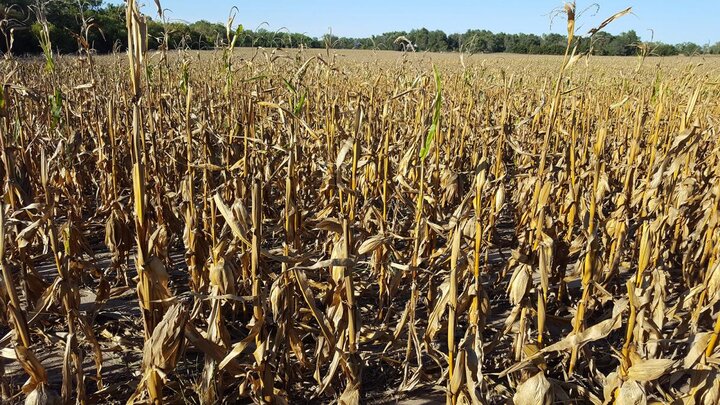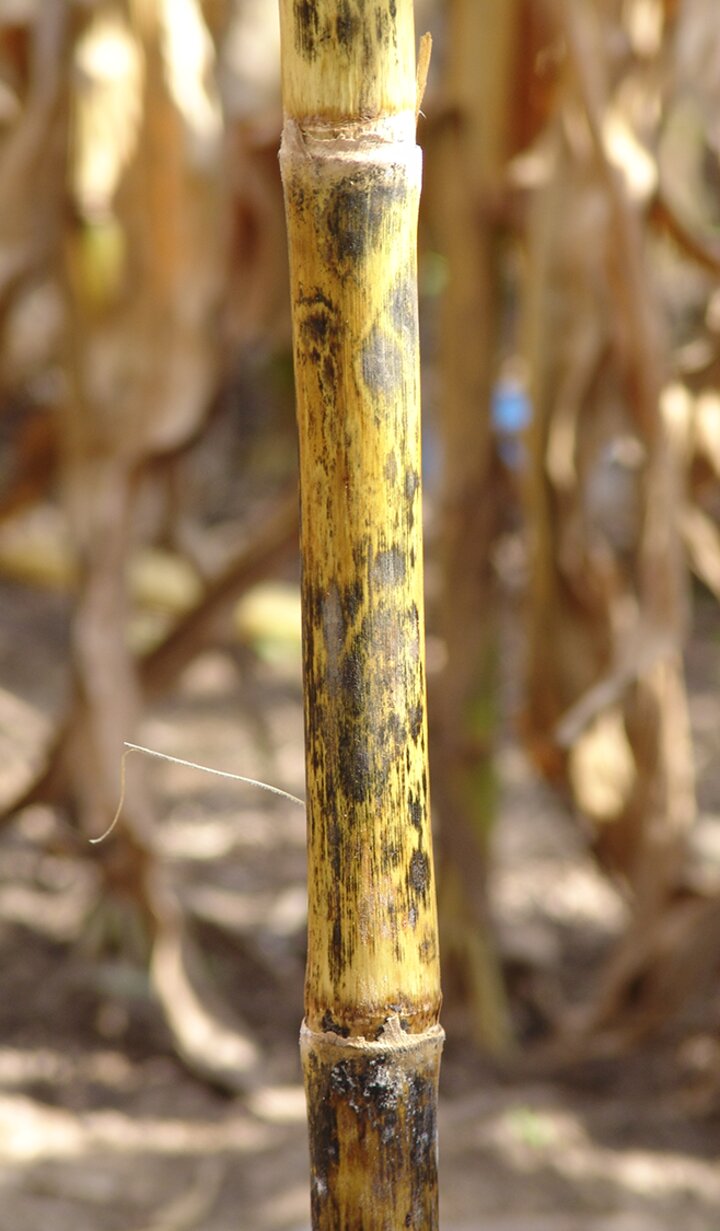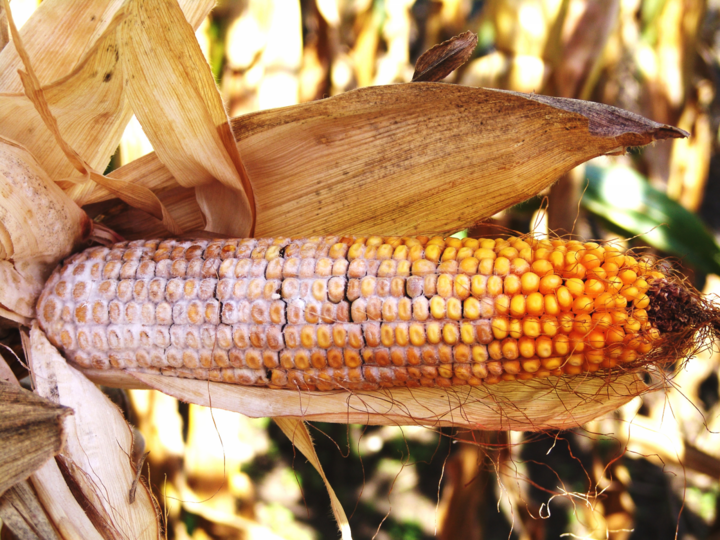

Stalk rot diseases continue to increase in Nebraska corn fields and ear rot diseases are beginning to develop in some fields. As producers scout for stalk rot diseases to identify fields that may be at increased risk for lodging and harvest complications, they should also be alert to developing ear rot diseases and the potential need to manage this grain differently post-harvest.
Stalk Rot Diseases
Anthracnose stalk rot (with top dieback symptoms caused by the fungus Colletotrichum graminicola) has been especially common this year. The disease can cause the premature death of several internodes above the ear causing browning of the tops of the plant while the lower plant may still be green. During late season, the tops of the plants may also break off (Figure 1).
Nebraska Extension Plant Pathologist Tamra Jackson-Ziems discusses stalk rot diseases on the Sept. 16 Market Journal.Black lesions may develop at the nodes initially and spread to the lower internodes later in the season (Figure 2). The black discoloration is the pigmented fungal strands (hyphae) that may accumulate either on the outside or inside of the stalk as the fungus systemically colonizes the stalk. Although the fungus can also cause a leaf blight disease, it is not correlated well with later stalk rot development. The fungus may infect directly through the epidermis of the plant stalk or roots from infected buried debris or via wounds. Affected stalks often have the pith area rotted out, compromising the overall stalk strength. They may lodge or be easily crushed by hand and can be evaluated using the push or pinch tests while walking through the field.
Resistant hybrids can be effective at reducing anthracnose stalk rot disease, although resistance to the leaf blight phase is not well correlated with resistance to the stalk rot phase of this disease. Most commercially available hybrids have some resistance and do not develop the disease until late season.
Ear Rot Diseases
Ear rot diseases are beginning to develop in some Nebraska fields and reportedly those in other states, as well. Corn fields should be scouted prior to harvest to assess ear rot disease, paying special attention to higher risk fields. Husks of affected ears may be discolored before other ears in the field or tip over early. Some fungal growth may only be evident after husks are opened on the ear to reveal a cottony fungal growth that can vary in color.

Ear rot diseases are caused by several species of fungi that can continue to grow in stored grain, causing further loss of grain quality. In addition, some fungi may produce secondary mycotoxins that can be harmful at higher concentrations to livestock and other consumers.
Ear rot diseases are more common in wounded ears, especially those damaged by ear-feeding insects or hail. In addition, some growing conditions, especially damp weather and cool temperatures during fall that slow grain drying, can favor fungal infection as well.
Corn harvested from fields with widespread ear rot diseases should not be stored long term as fungi will continue to grow in storage and reduce grain quality. If affected grain must be stored, it should be cooled and dried quickly to less than 15% moisture to minimize mold growth. Grain bin fans should be used in storage bins to continue to move air through grain to equalize temperature throughout and prevent condensation development inside the bins that can also promote fungal growth.
Currently, the most commonly observed ear rot disease appears to be Diplodia (Stenocarpella) ear rot. Infection is usually evident on the butt of the ear initially (Figure 3), but can spread across the entire ear thereafter giving it a lightweight feeling. The fungus can also produce small, black reproductive structures on kernels that are raised and may feel rough to touch and can often be scratched off. Although this fungus is not known to produce a mycotoxin, it can grow quickly and reduce grain quality, and will continue to grow in the bin.
More Resources
The UNL Corn Disease Profiles can be helpful in differentiating among numerous stalk and ear rot diseases:
Corn Disease Profile II: Descriptions and photos of stalk rot diseases of corn, including brief management suggestions. (Also available in print.)
Corn Disease Profile III: Descriptions and photos of ear rot diseases of corn with brief management suggestions. (Also available in print.)
For more information also see: Common Stalk Rot Diseases of Corn
